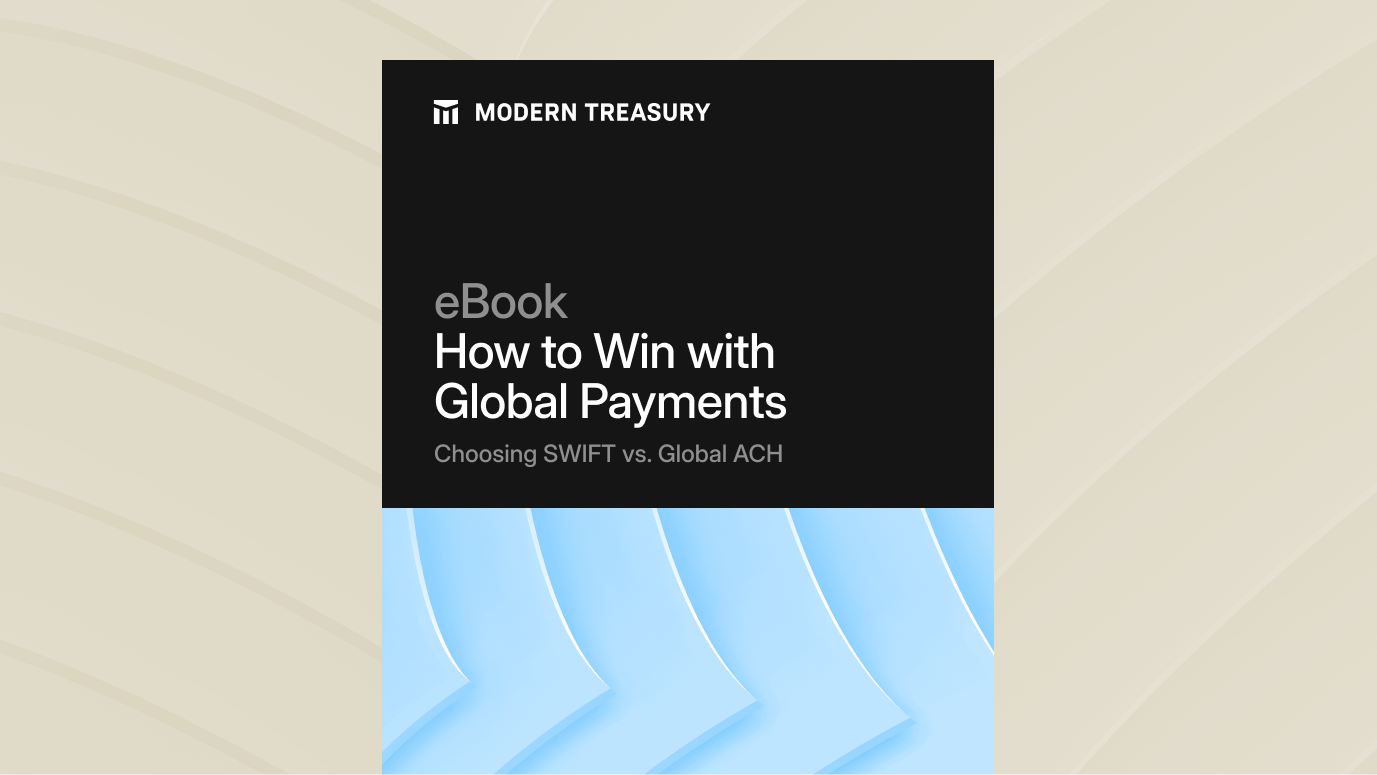Join us at Transfer 2025 to hear how industry leaders are building payments infrastructure for a real-time world.Register Today →
How To Send an ACH Payment Internationally
Sending money internationally can be complicated. This post explains how to use ACH rails to send money abroad, using the International ACH Transaction (IAT) specification and the FedGlobal ACH program.

Cross-border payments are the lifeblood of the global economy. When building an enduring, global company based in the United States, it’s important to consider how one might send and receive money both within our border and outside of it. Sending money internationally is complicated, but architecting one’s payment flows using the right rails can save a business money and even be a competitive differentiator for a business.
Traditionally, SWIFT wires were the gold standard for sending money abroad. ACH, run by The Clearing House and the Federal Reserve, is the tried and true method of sending money domestically. As our world evolves and global commerce becomes further interconnected, U.S. financial institutions have developed new ACH codes and enhanced ACH payment rails to assist sending the money abroad, most notably the International ACH Transaction specification and the FedGlobal ACH program.
It’s important to understand that while it’s still impossible to send a typical ACH across borders, both of these payment types will be used by a company that sends money abroad. But what exactly do these two terms mean, and how do they work? Understanding both of these payment types is essential for building business ready for sending and receiving international payments.
Sending an International ACH Transaction
An International ACH Transaction refers to the “IAT” SEC code found in domestic ACH payments. It refers to money being sent domestically between two U.S. financial institutions with the final destination of the payment being sent across borders.
All ACH payments have what’s known as a standard entry code (SEC) attached to them. An SEC attribute signals to the Federal Reserve extra information about why the ACH transaction exists. For example, a “TEL” SEC code signifies that a transaction was initiated verbally over a phone call. In this case, an “IAT” code signifies a payment transaction that will eventually involve an overseas party.
Let's say a wedding planning company, Modern Wedding, is booking a destination wedding for an American newlywed couple. In this case, they’re reserving a wedding venue in Lake Como, Italy. When debiting a customer for the wedding expenses, they should earmark their payment with an IAT SEC Code to notify their financial institution that this money is for an eventual overseas wire transfer in USD to the Italian wedding venue.
Using Modern Treasury, you can create this payment with a simple API call:
IATs were created by the National Automated Clearing House Association (NACHA) because of the “Travel Rule” which establishes record-keeping requirements for U.S. financial institutions.
FedGlobal ACH
FedGlobal ACH goes beyond payment SEC codes to build an entirely new extension to the ACH system: a way to truly send ACH payments globally. Unlike normal IAT transactions, which are essentially ACH payments with metadata regarding a foreign party, FedGlobalACH can be thought of as a new payment rail itself that is truly capable of cross-border payments.
Designed by the Federal Reserve and sold to banks, FedGlobal ACH builds off of the IAT ACH specification to create a standard for sending money directly overseas. Unlike SWIFT, which costs around $20-30 depending on the bank, FedGlobalACH positions itself as a way to send money several magnitudes cheaper than other cross-border payments options.
Under the hood, a FedGlobal ACH is an ACH payment that gets sent directly to the Federal Reserve. From there, the Federal Reserve can send payments in bulk to partnering foreign institutions, and the economies of scale and reach of the network allows payments to be sent for much cheaper than the alternatives. Because this is a product sold to banks, the biggest dependency to using this new rail is understanding whether or not a given bank supports it.
Conclusion
The international ACH specification has changed a lot since it was invented in the 1970s, and today there are new ways to send ACH payments to adapt to an increasingly international economy. While International ACH Transactions and FedGlobalACH sound similar, they’re fundamentally different products.
Moving money at scale is complicated, and building a tech-enabled business that moves money at scale involves a strong understanding of what the options for sending cross-border payments are and how to utilize them effectively. For businesses that moves money, Modern Treasury enables programmatic money movement and can manages all types of payment operations at scale. To try it out, sign up for a sandbox or talk to a payments advisor.
Try Modern Treasury
See how smooth payment operations can be.






